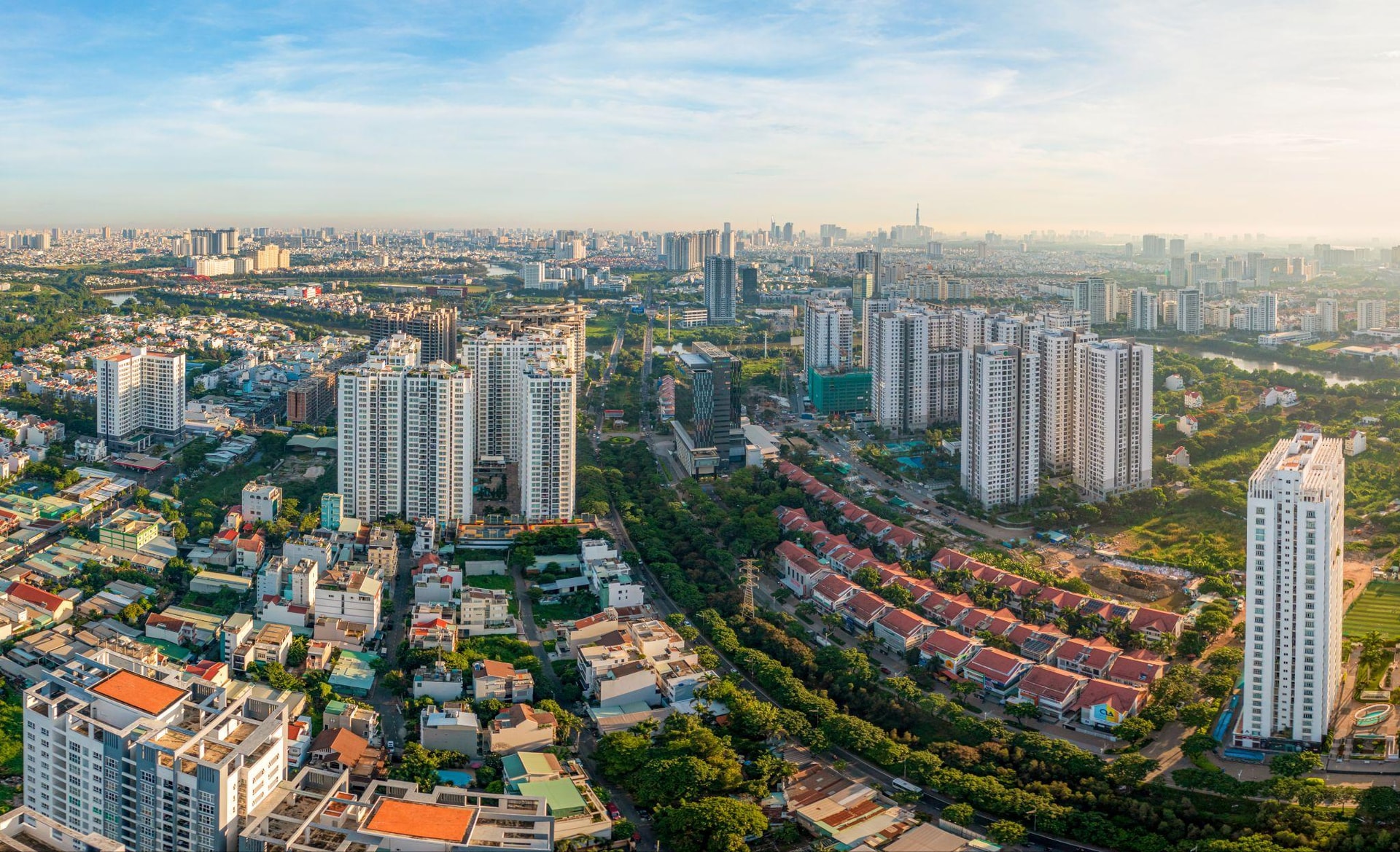Vietnam's real estate market might keep growing in 2025
The Vietnam real estate industry is anticipated to witness many highlights in 2025, building on the recovery in 2024, with promising growth scenarios in the horizon.

The real estate market will continue its positive recovery.
Positive changes have occurred in the Vietnamese real estate market during the past year. Despite persistent difficulties, the macroeconomic climate at home has grown.
Vietnam's economy is doing well; a 7% GDP growth rate is anticipated. The amount of foreign investment has increased dramatically, especially in the real estate sector, where both the amount of newly registered capital and its share of overall FDI have increased. The State Bank of Vietnam keeps interest rates steady in order to encourage manufacturing and accelerate the expansion of credit.
Continued Positive Recovery
Key laws officially came into effect, and numerous legal documents, decrees, and circulars were issued, contributing to regulating and fostering a healthy real estate market.
The BHS Group's Research and Development Department (BHS R&D) reports that supply has increased in the majority of segments, with the condominium industry seeing a notable uptick in both supply and transactions. All four categories show signs of demand revival. High absorption rates were observed in a number of significant projects that were introduced throughout the year, especially in the luxury and high-end apartment segments.
In the apartment market, primary sales prices have been steadily increasing and are starting to spread to other kinds of real estate. However, major markets like Hanoi, Da Nang, Ho Chi Minh City, and nearby satellite cities account for the majority of these growth.
Market confidence has improved, but customer sentiment remains cautious, with limited dispersed investments. Buyers prefer safe, legally compliant products from reputable developers, choosing properties close to where they live.
In Q4 2024, the total primary supply of high-rise housing in Hanoi exceeded 20,500 units, up 62% from the previous quarter and double the same period last year. For the entire year, approximately 43,350 apartments were launched, a 96% increase compared to the previous year. Most of the supply came from the western and eastern parts of the city.
New supply in Q4 2024 reached nearly 16,200 units, primarily from subsequent phases of existing projects. However, two new large-scale projects—Masterise Grand Avenue (VH Global Gate – Hanoi) and Masterise Grand View (The Global City – Ho Chi Minh City)—significantly boosted new supply during this period. In total, approximately 37,700 new apartments were introduced to the market in 2024, a 3.4-fold increase compared to 2023.
14,919 units were transacted in Q4 2024, a 77% increase over the previous quarter and a 3.6-fold increase over the same period the year before. About 37,750 flats were sold during the year, which is twice as much as in 2023. Projects in Hanoi accounted for the majority of trades.
Hanoi had twice as many high-rise housing units as Ho Chi Minh City in Q4 2024. In the meantime, the low-rise market, which was mostly focused on northern cities, saw significant increases in supply and transactions as compared to the prior year.
For the whole of 2024, there were 29 new projects, while most of the supply came from existing projects addressing inventory. The overall absorption rate for 2024 reached 80% of total supply. Selling prices in Q4 2024 increased by 2-7% quarter-on-quarter, and for the year, prices rose by 10-20%.

Despite challenges, opportunities for a breakthrough in the real estate market are significant.
Two Growth Scenarios
According to BHS R&D, approximately 42,200 apartments are expected to enter the market in 2025, concentrated in Hanoi and Ho Chi Minh City, but gradually expanding to satellite cities as urban land becomes scarcer.
The high-end and luxury apartment segments will continue to lead the market. Notably, the market will witness a significant shift, with most products belonging to major developers such as MIK, Masterise, Vingroup, and Sungroup.
Experts from BHS R&D predict that housing demand in central Hanoi and Ho Chi Minh City remains high, especially in the mid-range segment. However, customers are gradually shifting towards suburban areas with convenient transportation infrastructure, developed by major developers.
Since the majority of items originate from new stages of ongoing projects and are concentrated in particular regions and among particular developers, primary sales prices will continue to climb. All categories are anticipated to rise at average quarterly rates of 3–7%, with the highest-end market sector seeing the most increases. It is anticipated that prices in the B-grade apartment market will eventually vanish.
Subdivision of land parcels in first- and second-tier cities will be restricted by new laws. Condos are therefore still the best way to buy reasonably priced real estate for habitation and living, which makes them a promising development trend for the near future.
Low-rise housing supply in 2025 is expected to increase significantly, with approximately 28,800 products primarily located in Hanoi, Hung Yen, Hai Phong, Ha Nam, Dong Nai, and Long An. Land plots remain popular due to their lower total cost compared to built properties and ease of liquidation.
However, 2023-2024 served as a filtering period for land plot projects. Speculative land subdivision and market manipulation have caused investors to be more cautious. Conversely, land plots with real value—centrally located, red-book certified, fully developed infrastructure, and total values under 3 billion VND—are favored by local buyers for asset accumulation.
Ready-built low-rise products will see strong market entry in 2025, with major developers such as Vingroup, Sungroup, and EcoPark actively launching new projects.
Customer demand for land plots, townhouses, and villas remains high, supported by ample household savings and increased demand for asset accumulation. Buyers prefer legally completed products in projects that are ready for immediate use, feature complete infrastructure, and are developed by reputable investors.
With average quarterly growth rates of 2–5%, primary sales prices will continue to show a modest rising trend.
Two growth scenarios are presented by BHS R&D. Strong economic expansion, steady or slightly falling interest rates, and a thriving real estate market are anticipated in Scenario 1. In Scenario 2, the market will hold steady at 2024 levels due to rising interest rates and global political unpredictability; there will be encouraging signs but no notable innovations.








